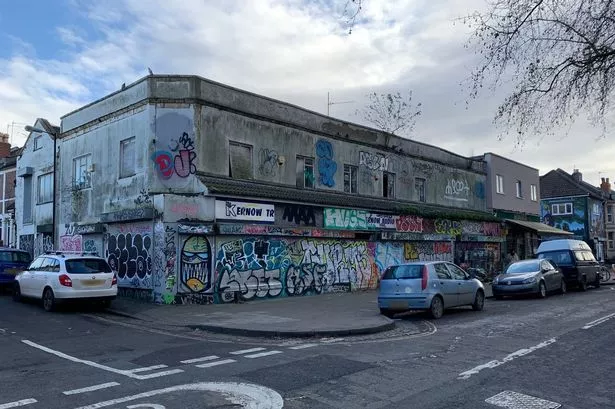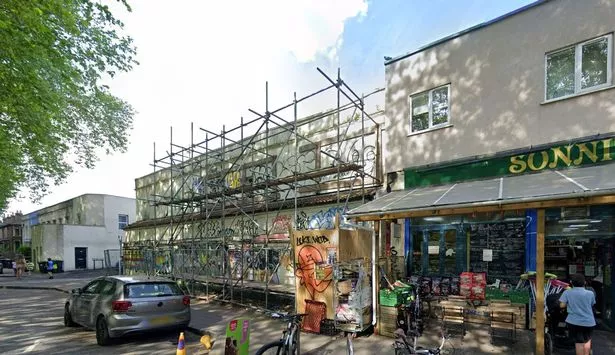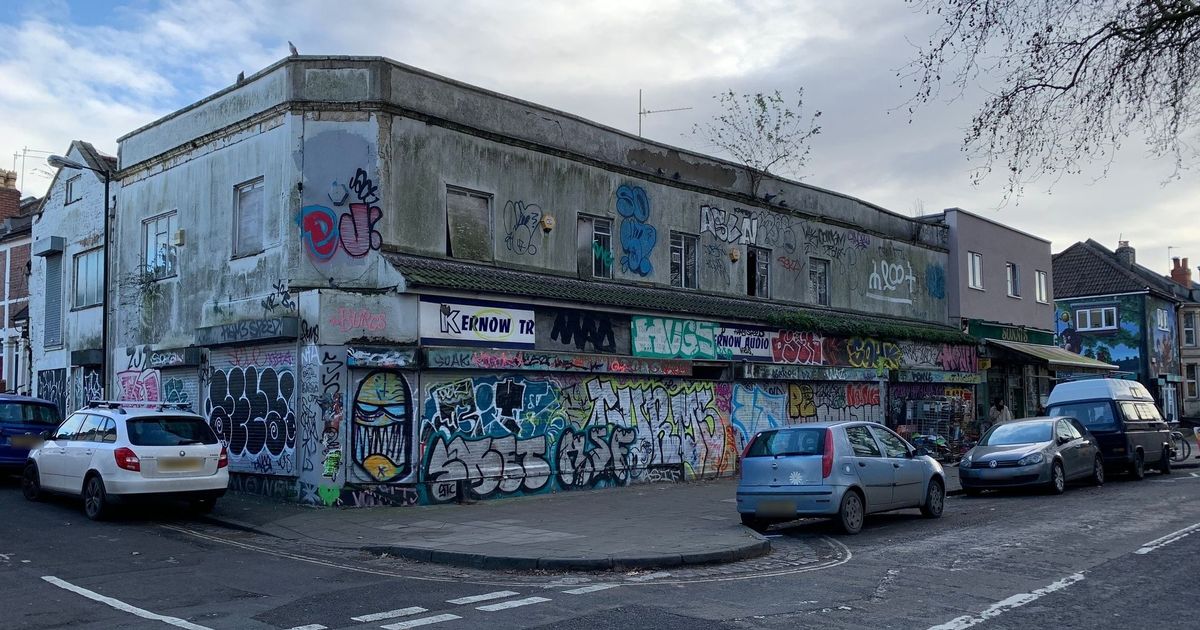Local residents and Councillors are urging the Council to ensure that they aren’t left with an empty plot of land for years
12:00, 30 Oct 2025Updated 18:20, 30 Oct 2025
 The ‘Kernow Building’ in Mina Road, St Werburghs(Image: Bristol City Council)
The ‘Kernow Building’ in Mina Road, St Werburghs(Image: Bristol City Council)
Concerns remain that the site of one of Bristol’s notorious eyesore buildings could remain vacant for years to come, even after it is eventually demolished. Earlier this week it was announced that Bristol City Council has been granted permission to demolish the Kernow Building on the corner of Mina Road and Tyne Street in St Werburghs which has been derelict for some 25 years.
Work is scheduled to begin in the coming weeks, with a letter to residents having been sent out on October 22 advising them of the plan. The news comes after BristolLive reported back in August that Bristol City Council chiefs had been granted the power to demolish the building and then send the bill to the owner who has refused to do anything with it for this time.
After the roof collapsed last year, in the autumn local residents renewed their campaign to get the council to act. Bristol City Council has previously taken legal action against the building’s owner, landlord and property owner Mushtaq Ahmed, and he was fined for failing to comply with community protection notices and remedial orders, but has only erected scaffolding and has not carried out works to sort out the building.
Chair of the Economy and Skills Policy Committee, Councillor Andrew Brown said: “Despite being given multiple opportunities to meet their building safety obligations, including a magistrate’s court order in January, the owner has repeatedly failed to ensure their property remains safe.
“As a result, we will be proceeding with demolition of the building and will maintain close communication with both the owner and residents throughout this process.
“While this decision was not taken lightly, I hope it acts as a stern reminder to all that we will take action against those who fail to meet their legal responsibilities.”
Now local residents have spoken out about what this news of an upcoming demolition of the building will mean for them, with several still concerned that even after the building is demolished, the owner’s track record could still mean the land sits empty for a long time. Chris Simons, who lives in St Werburghs, told BristolLive: “The Kernow building has been empty for decades.
“I’m sure other people have mentioned that the building has been neglected and allowed to decay structurally – the roof has collapsed. The building is now a danger to passers by and adjacent properties, as well as attracting vermin and graffiti.
“In a time of homelessness in Bristol, it is incomprehensible to me that this property be left empty to rot away over decades. I cannot understand why the owner of the property would behave in such an anti-social and self-defeating manner.
“I would also comment that in the face of the obvious facts of the case, Bristol City Council seem to have neither the legislative powers nor the financial resources to do much in a timely manner. The demolition order is a real step forward.
“I welcome the demolition order, although I still am concerned that after that, the land may not be developed for some time due to the stubborn, anti-social landlord and constraints on Bristol City Council.”
 A streetview image of the Kernow building on the corner of Mina Road and Tyne Street in St Werburgh’s, Bristol, taken in May 2025. The building has been empty and derelict for almost 25 years(Image: Google Maps)
A streetview image of the Kernow building on the corner of Mina Road and Tyne Street in St Werburgh’s, Bristol, taken in May 2025. The building has been empty and derelict for almost 25 years(Image: Google Maps)
Councillor Tim Wye, the councillor for the Ashley ward and chair of the Health Overview and Scrutiny Committee said he is also worried about what happens next and what measures could be introduced to be sure that the building’s owner, Mr Ahmed, doesn’t leave the site derelict for years.
Councillor Wye adds: “This has been a disgrace for about twenty years. It causes lot of upset to local residents and I have had numerous complaints of it attracting vermin, tagging and other problems. Its now in such a state of disrepair it become unsafe.
“I’m very grateful to council officers for progressing the demolition order which will be a huge relief to residents. There is still a question of what happens next to the site but this is still a big set forward.”
Residents set up a ‘Kernow Building Petition’ to try and ‘shape the future of the site’. The online page includes an animation created by a local resident with ‘a bold imagination and a passion for a better St Werburghs’. It shows the current derelict and graffiti-covered building on the corner transformed into four stylish and modern properties with ground floor shop fronts and two or three further floors above, almost in townhouse style architecture.
The petition reads: “Demolition is just the beginning. We must now ensure the site doesn’t remain an empty lot.
“We’re calling on Bristol City Council to take decisive action—ideally through a Compulsory Purchase Order (CPO)—to guarantee meaningful redevelopment that benefits the community. If you support transforming this hazardous site into a vibrant, useful space, please sign and share our petition widely—through your street WhatsApp groups, local networks, and beyond.
“Whatever this space becomes, it should reflect the voices and needs of our community, so start to think of some ideas.”
What is a Compulsory Purchase Order?
Compulsory Purchase Orders are legal tools used by certain public and private bodies, including local authorities, to acquire land or property without the owner’s consent, in the interest of public regeneration projects or improving local infrastructure. Describing a CPO, the Gov.uk website says: “Used properly, they can contribute towards effective and efficient urban and rural regeneration, essential infrastructure, the revitalisation of communities, and the promotion of business – leading to improvements in quality of life.
“Acquiring authorities should use compulsory purchase powers where it is expedient to do so and where there is a compelling case in the public interest to make a compulsory purchase order.”
